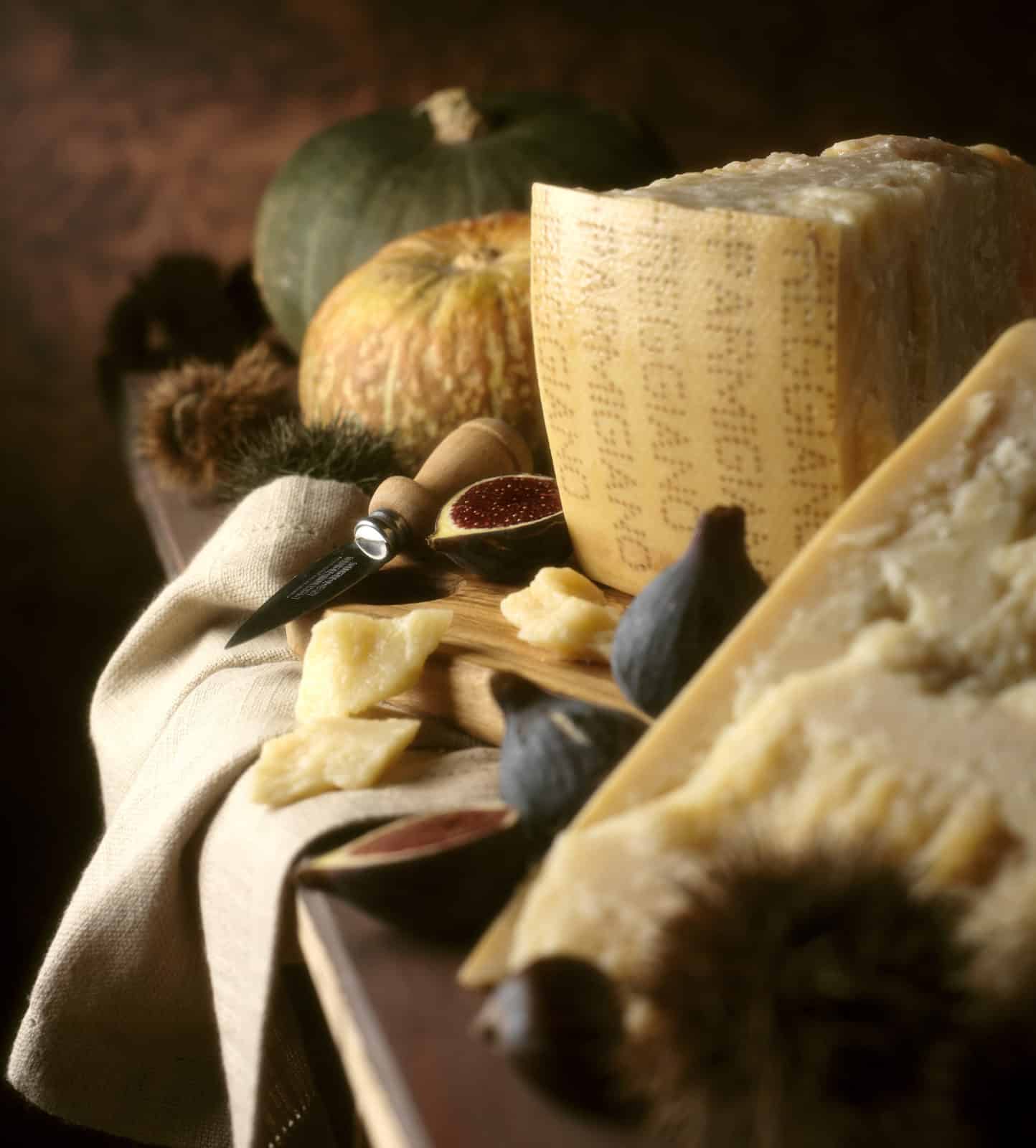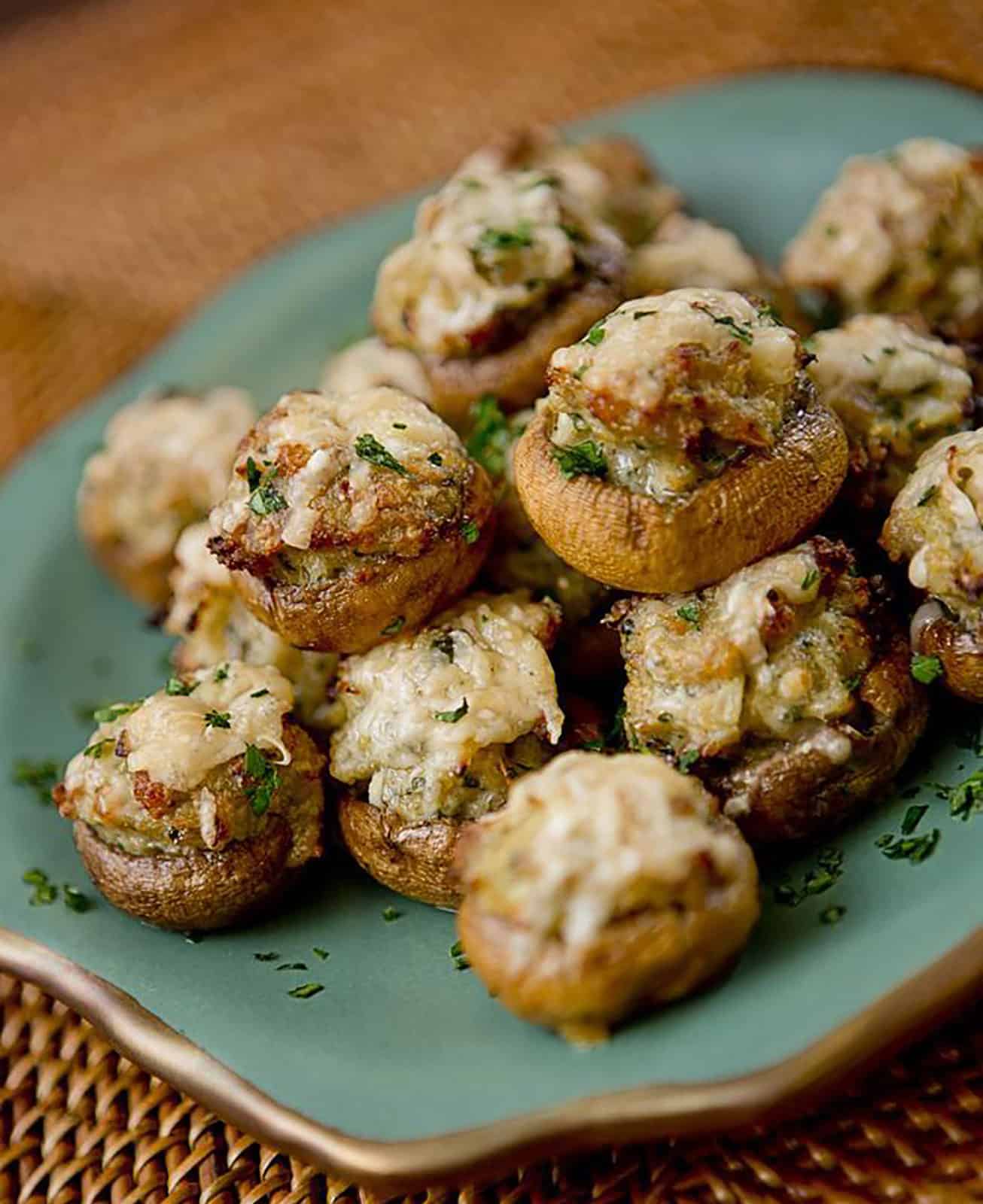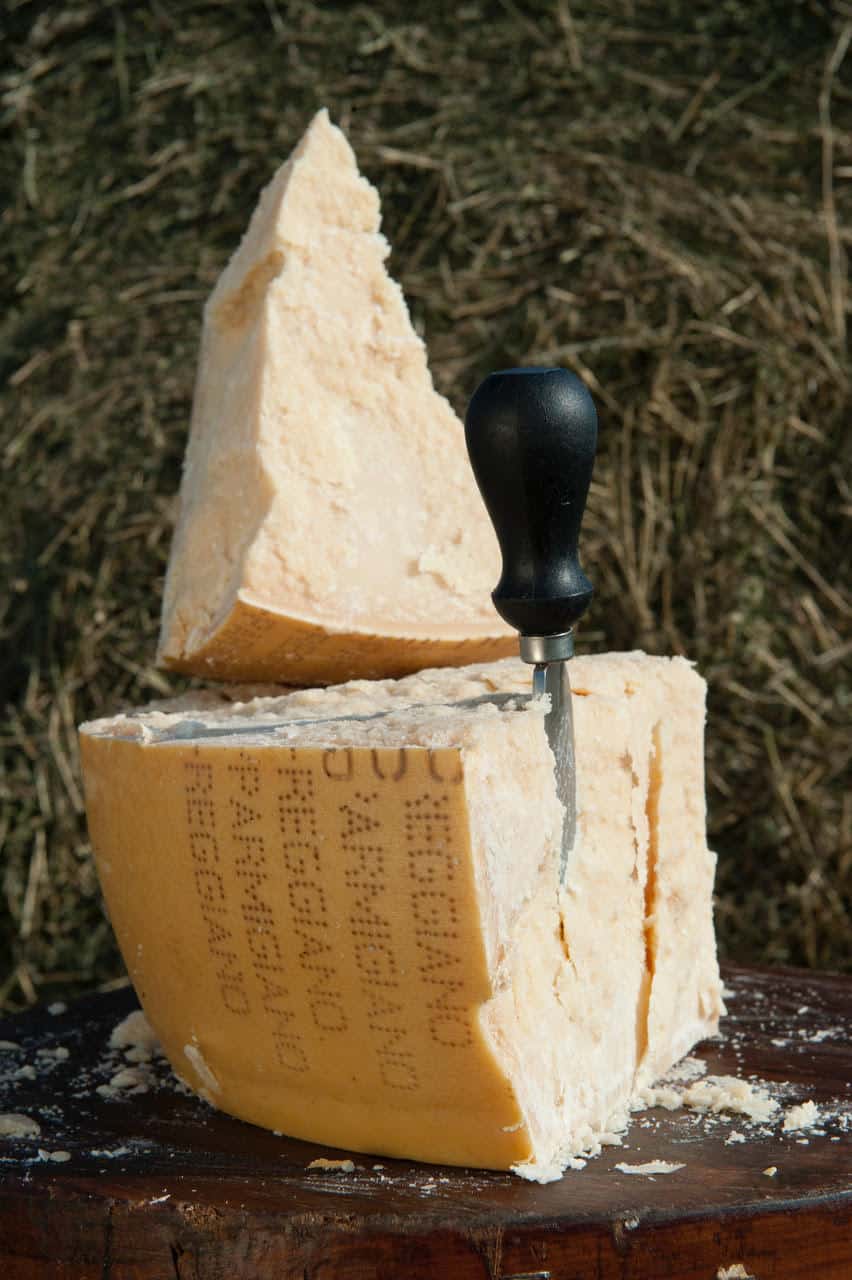
When you hear the word parmesan, what’s the first image that comes to mind? If it’s a plastic jar of “shaky cheese,” we’ve got news for you. Parmigiano Reggiano—the designated name for the hard, cow’s milk cheese that’s been made for centuries in the Italian provinces of Parma, Reggio Emilia, Modena, and parts of Bologna and Mantua—is so much more than a pasta topper.
There’s no denying that, with its grainy texture, sharp tingle, and unmistakable aroma, Parmigiano Reggiano is a bold cheese. Some diners might scratch their heads when presented with a craggy wedge on a cheese board, unsure of how to enjoy such a strong offering. But we recommend treating Parmigiano Reggiano like an aperitif: something with which to enliven the palate before a meal. Fresh fruit or preserves are tried-and-true accompaniments, but raw vegetables also make a bright foil to the cheese’s complex, umami profile. And of course, any of the delicious charcuterie from Italy provides the ultimate savory backdrop.
Parmigiano Reggiano is perhaps the best-known example of a cheese with a Protected Designation of Origin (PDO), the distinction that dictates where, how, and with what raw materials a product is made. Cheesemakers everywhere have attempted to replicate this complex hard cheese, but only those made according to established tradition within the designated region of origin can bear the full name. When shopping for the Italian pantry staple in your local grocery store, look for the official, oval-shaped Parmigiano Reggiano seal on the rind, as well as its distinctive dotted inscription, bestowed by the Consorzio del Formaggio Parmigiano Reggiano.
Getting Granular with Chef Michele Casadei Massari
Chef Michele Casadei Massari, the Consorzio’s first US-based brand ambassador, is committed to educating American consumers on the unique benefits of choosing authentic Parmigiano Reggiano. We caught him one afternoon at his restaurant Lucciola, where he is the award-winning executive chef, and asked him about the best ways to select, use, and enjoy this Italian cheese icon.
c: What’s your go-to, three-ingredient dish that uses Parmigiano Reggiano?
Chef Michele Casadei Massari: My favorite one, because it really highlights the quality of the Parmigiano Reggiano, is spaghetti pomodoro. You only have three ingredients: the Parmigiano Reggiano, the tomato passata (puree), and a great olive oil, possibly raw, either from Puglia or Sicily. And then a touch of salt, but very limited.
c: What age of Parmigiano Reggiano do you use for that recipe?
MCM: Twenty-four months, added to the sauce, right at the end. When you are almost ready to plate, that’s the moment you add the Parmigiano Reggiano, otherwise it stretches and might stick to the bottom of the pan due to the heat. But for the finishing touch, I also add the 36-month. Texture is the key—I like the two stages and two ages.
c: A lot of people, especially in the States, don’t really think of Parmigiano Reggiano as a snacking cheese. How would you change their minds?
MCM: I send my guests a piece of 14-month-old Parmigiano Reggiano, because it sets the mood for any of my dishes. It’s the perfect start to a meal because it has everything: the sweetness, the milkiness, the salt, the minerality. I tell them to take a sip of water and then have them try the 24-month-old, and I ask them, what’s the sensation? I have to tell you, the reaction is always, “Wow, this is so delicious! I never thought I could do that with Parmigiano Reggiano. It’s an amazing cheese.”
c: And what flavor notes might people detect?
MCM: Any bite of Parmigiano Reggiano really connects—it’s full of aromas. You can detect banana, bay leaves, or nutmeg. You can taste what we would call the brodo flavor, which is an ensemble of different flavors. You can even detect touches of flowers. It depends where it’s coming from, right? Because it contains so much information about the territory. Flavors vary from year to year and evolve through the aging process.
c: What’s the ideal temperature at which to serve Parmigiano Reggiano?
MCM: When you want to shave it, you can do so right out of the refrigerator. But if you’re planning to have a little piece with wine, I would take it out of the refrigerator 20 or 30 minutes before. If I have a very aged Parmigiano Reggiano I like to serve it on wood, which doesn’t conduct or hold heat. Just like wine, the consistency changes with the temperature.
c: What’s a unique pairing you’d suggest for people to really savor Parmigiano Reggiano “in the raw”?
MCM: Parmigiano Reggiano by itself is delicious, but I also love to pair it with nuts or jam. When I really want to get someone’s attention, I pair it with toasted seaweed.
c: That is different!
MCM: Parmigiano Reggiano is umami itself. It contains everything. And if the seaweed is toasted, it gains a lot of exciting flavor.
c: And how would you serve this pairing?
MCM: I always try to serve it on a very clean, white plate, because the color of the Parmigiano Reggiano tells us a lot: If it’s coming from the mountains, if it’s coming from a certain type of cow. The color of the plate is going to help us to see all the details and beautiful structure of the cheese. We eat with the eyes first.
c: What’s Parmigiano Reggiano starring in on Lucciola’s menu this week?
MCM: I’m actually going to pair almonds, 72 or 76-percent dark chocolate, and 36-month Parmigiano Reggiano. And I’m ending dinner with a great Passito from Pantelleria. This pairing is going to be a keeper.
c: What emotion comes to mind when you think of Parmigiano Reggiano?
MCM: It feels like home, recalling memories. It feels nurturing; that’s the word.
Chef Massari will hold educational events and culinary workshops online beginning in 2021, and he will introduce innovative recipes and pairings with Parmigiano Reggiano. His recipes will be specifically tailored to the American palate, incorporating easy-to-find and healthy ingredients alongside the already nutrient-packed cheese. Find Chef Massari’s recipes, pairing suggestions, and more at parmigianoreggiano.us, and discover the best ways to appreciate this cheese masterpiece.
Did You Know?
- It takes about 145 gallons of milk to produce a single wheel of Parmigiano Reggiano.
- Each wheel of Parmigiano Reggiano is stamped with a unique alphanumeric code, which can be traced all the way back to the cheese’s specific place of origin.
- Quality inspectors are trained to tap wheels of Parmigiano Reggiano with a special hammer and listen for possible defects inside the cheese.
- The four cow breeds that lend their milk to Parmigiano Reggiano production are Italian Frisona, White Modenese, Red Reggiana, and Brown cows.
- About 3,700,000 wheels of Parmigiano Reggiano are produced in Italy every year.

Parmigiano Reggiano Stuffed Mushrooms
Ingredients
- 36 oz. Mushrooms
- 1 lb. Italian sausage bulk, either hot or mild
- 1 Onion finely chopped
- 1/2 teaspoon salt
- 1/4 teaspoon pepper
- 1 egg
- 3/4 cup Parmigiano Reggiano grated
- 1/2 cup Breadcrumbs
- 2 tbsp. Parsley fresh, chopped
- Olive Oil spray
Instructions
- Preheat the oven to 375° F and grease a baking sheet or use a Silpat.
- Clean mushrooms and remove stems. Use a melon baller to remove most of the gills and to hollow them out a little. (Save stems and mushroom leftovers for another use or chop fine and mix into the filling.)
- Place sausage in a large bowl, add onion, seasonings, egg, 1/2 cup Parmigiano Reggiano, breadcrumbs and parsley. Mix with your hands until well combined.
- Fill mushrooms with a generous scoop of the sausage mixture, piling it high.
- Place mushrooms on prepared baking tray, spray lightly the tops with olive oil spray and bake for 20 minutes. Sprinkle remaining Parmigiano Reggiano over mushrooms and bake 10 minutes longer.
- Serve hot.





